Florian Lipsmeier
Human Activity Recognition from Smartphone Sensor Data for Clinical Trials
Aug 07, 2025Abstract:We developed a ResNet-based human activity recognition (HAR) model with minimal overhead to detect gait versus non-gait activities and everyday activities (walking, running, stairs, standing, sitting, lying, sit-to-stand transitions). The model was trained and evaluated using smartphone sensor data from adult healthy controls (HC) and people with multiple sclerosis (PwMS) with Expanded Disability Status Scale (EDSS) scores between 0.0-6.5. Datasets included the GaitLab study (ISRCTN15993728), an internal Roche dataset, and publicly available data sources (training only). Data from 34 HC and 68 PwMS (mean [SD] EDSS: 4.7 [1.5]) were included in the evaluation. The HAR model showed 98.4% and 99.6% accuracy in detecting gait versus non-gait activities in the GaitLab and Roche datasets, respectively, similar to a comparative state-of-the-art ResNet model (99.3% and 99.4%). For everyday activities, the proposed model not only demonstrated higher accuracy than the state-of-the-art model (96.2% vs 91.9%; internal Roche dataset) but also maintained high performance across 9 smartphone wear locations (handbag, shopping bag, crossbody bag, backpack, hoodie pocket, coat/jacket pocket, hand, neck, belt), outperforming the state-of-the-art model by 2.8% - 9.0%. In conclusion, the proposed HAR model accurately detects everyday activities and shows high robustness to various smartphone wear locations, demonstrating its practical applicability.
Personalized Longitudinal Assessment of Multiple Sclerosis Using Smartphones
Sep 20, 2022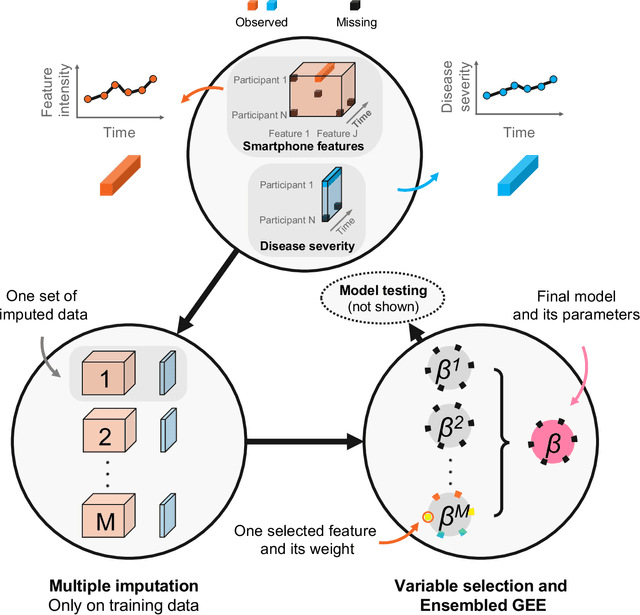
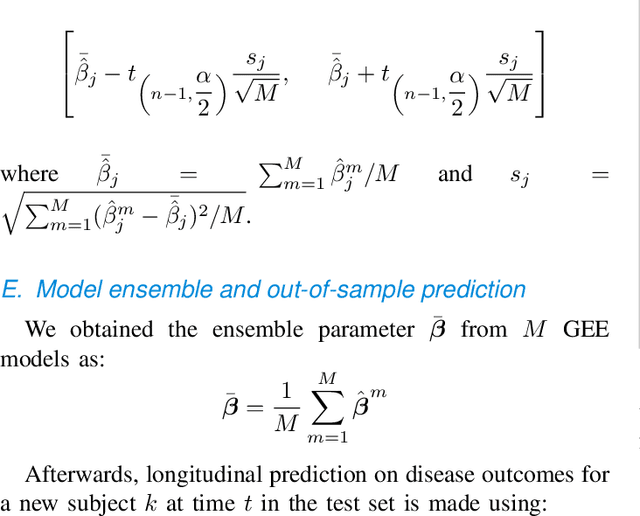

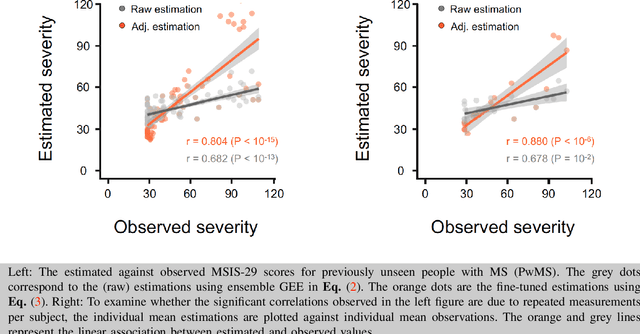
Abstract:Personalized longitudinal disease assessment is central to quickly diagnosing, appropriately managing, and optimally adapting the therapeutic strategy of multiple sclerosis (MS). It is also important for identifying the idiosyncratic subject-specific disease profiles. Here, we design a novel longitudinal model to map individual disease trajectories in an automated way using sensor data that may contain missing values. First, we collect digital measurements related to gait and balance, and upper extremity functions using sensor-based assessments administered on a smartphone. Next, we treat missing data via imputation. We then discover potential markers of MS by employing a generalized estimation equation. Subsequently, parameters learned from multiple training datasets are ensembled to form a simple, unified longitudinal predictive model to forecast MS over time in previously unseen people with MS. To mitigate potential underestimation for individuals with severe disease scores, the final model incorporates additional subject-specific fine-tuning using data from the first day. The results show that the proposed model is promising to achieve personalized longitudinal MS assessment; they also suggest that features related to gait and balance as well as upper extremity function, remotely collected from sensor-based assessments, may be useful digital markers for predicting MS over time.
Interpretable Deep Learning for the Remote Characterisation of Ambulation in Multiple Sclerosis using Smartphones
Mar 16, 2021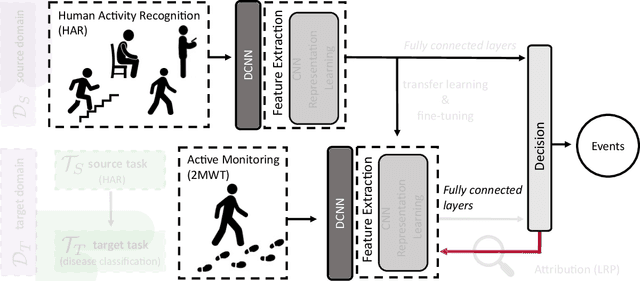
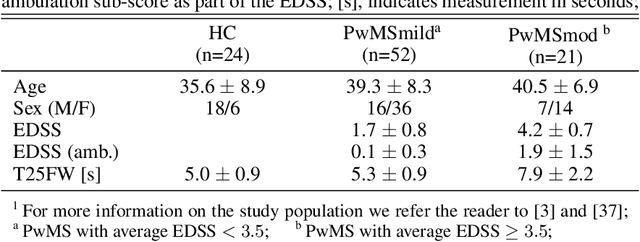

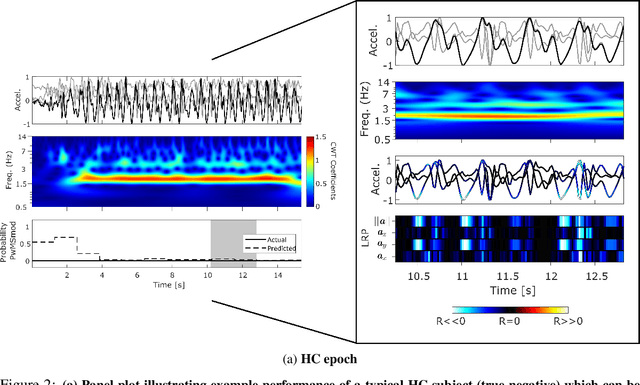
Abstract:The emergence of digital technologies such as smartphones in healthcare applications have demonstrated the possibility of developing rich, continuous, and objective measures of multiple sclerosis (MS) disability that can be administered remotely and out-of-clinic. In this work, deep convolutional neural networks (DCNN) applied to smartphone inertial sensor data were shown to better distinguish healthy from MS participant ambulation, compared to standard Support Vector Machine (SVM) feature-based methodologies. To overcome the typical limitations associated with remotely generated health data, such as low subject numbers, sparsity, and heterogeneous data, a transfer learning (TL) model from similar large open-source datasets was proposed. Our TL framework utilised the ambulatory information learned on Human Activity Recognition (HAR) tasks collected from similar smartphone-based sensor data. A lack of transparency of "black-box" deep networks remains one of the largest stumbling blocks to the wider acceptance of deep learning for clinical applications. Ensuing work therefore aimed to visualise DCNN decisions attributed by relevance heatmaps using Layer-Wise Relevance Propagation (LRP). Through the LRP framework, the patterns captured from smartphone-based inertial sensor data that were reflective of those who are healthy versus persons with MS (PwMS) could begin to be established and understood. Interpretations suggested that cadence-based measures, gait speed, and ambulation-related signal perturbations were distinct characteristics that distinguished MS disability from healthy participants. Robust and interpretable outcomes, generated from high-frequency out-of-clinic assessments, could greatly augment the current in-clinic assessment picture for PwMS, to inform better disease management techniques, and enable the development of better therapeutic interventions.
 Add to Chrome
Add to Chrome Add to Firefox
Add to Firefox Add to Edge
Add to Edge